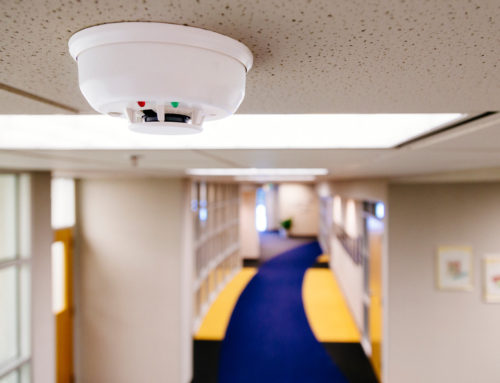During a house fire many victims describe the scene as panicked and fast-paced. Often times, the survival of occupants relies on advanced warning from smoke detectors and advanced planning as whole family.
Here are a few tips for planning your family’s fire escape plan:
- Make a plan! This means getting together as a whole family and practicing escape routes from each room of the house.
- Test your smoke detectors during your practices to ensure that they are interconnected and operating correctly. Monitored smoke detectors will inform the fire department of the alarm automatically.
- Check to make sure all doors and windows identified as escape routes are clear and are easily opened.
- Choose an outside meeting place a safe distance from your home.
- If there are small children, older adults, or family members with mobility limitations assign someone to assist them during an emergency.
- Share your fire escape plan with overnight guests.
- Once you are out, stay out! Under no circumstances should you ever go back into a burning building. If someone is missing, inform the firefighters or fire department dispatch when you call. Firefighters have the skills and equipment to perform rescues.
You should practice your fire escape plan twice a year and make sure to practice the drill as realistically as possible. Also, if you have a two story home consider investing in fire escape ladders and other tools designed to make escaping from the second floor more safe.
Also note, the new building code requires a smoke detector in each sleeping room, outside each sleeping area, and on each level of the home. Even if your home was built prior to today’s building code standards it is a good idea to keep your smoke detector system up-to-date with the newest requirements.
The National Fire Protection Association offers many great tips and tools to help families plan their fire escape plans and other safety information on their website at www.nfpa.org.
Visit this link to see NFPA’s downloadable ‘How to Make a Home Fire Escape Plan’ activity form and map. http://www.nfpa.org/~/media/Files/Safety%20information/For%20consumers/Escape/escape_plan.pdf
Sources: www.nfpa.org/safety-information/for-consumers/escape-planning/basic-fire-escape-planning




